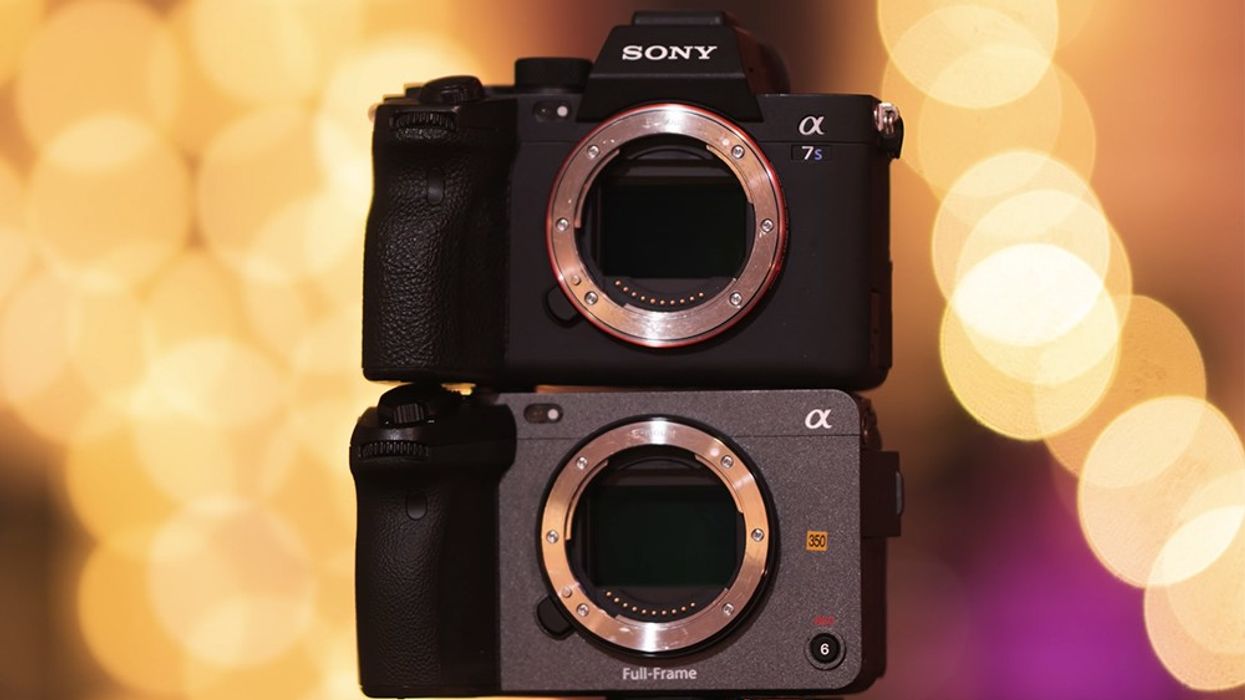What Philip Bloom Gets Right About 'What Exactly Is a Cinema Camera'
Filmmaker Philip Bloom contemplates the cinematic differences between the Sony FX3 and the Sony a7S III.

In what has almost become a rite of passage for every filmmaker and video professional, tackling the ageless question of just “What Defines a Cinema Camera?” has become a mythic quest all of its own. And while many might like to avoid the query altogether and, you know, just focus on filmmaking and video production, the question is always worth discussing as new technology emerges.
Philip Bloom asks the question during his review of Sony FX3. And, as he correctly points out, while the Sony FX3 is part of the Sony Cinema Line, it’s pretty much the exact same internal specs as the deservingly popular Sony a7S III.
So, while we encourage you to watch Bloom’s entire video review to hear his full thoughts on the subject, as well as his recommendations when comparing the Sony FX3 and the Sony a7S III, we will continue on below in our quest to nail down just what the heck a cinema camera exactly is.
What Makes a Cinema Camera?
This isn’t the first time, nor will it be the last time that No Film School asks the question. But it is certainly worth noting that answers have been attempted many times before. Most notably in this article, which actually opens up the discussion to a roundtable of industry leaders including filmmakers and manufacturers alike.
My favorite response perhaps comes from Marc Shipman-Mueller, a product manager for ARRI Camera Systems. He lays out the following seven tenets for the “tools that are more appropriate to the task in order to produce these projects in as efficient a manner as possible with the highest quality results.”
- A cine camera must capture the highest possible overall image quality.
- A high-end recording file type, high-end media, download-stations, and an efficient near-set workflow.
- Robust and reliable usage in all environmental conditions.
- Simple, easy operation.
- Professional interfaces.
- Accessories.
- Support.
There’s more to each of these points if you go and read the full article, but rest assured, if we hold cameras like Sony FX3 and the Sony a7S III (or many others at a similar price point) to these tenets, then they certainly meet the mark.
Is the Sony a7S III a Cinema Camera?
This is really where the debate most often centers. At least from a manufacturing perspective the Sony a7S III is not officially listed as a cinema camera in any strict terms. It is, after all, meant for both video and photo. However, if you actually go to Sony’s website the majority of the marketing information about the a7S III mentions its movie capabilities almost exclusively.
Still, as one commenter puts it, you can define a camera as a cinema camera if you simply “use it to shoot a film.” And the point that Bloom is really bringing up in his video, as well as his thoughts on the FX3 overall, seem to be that a “cinema camera” is maybe just a label which manufacturers put on something.
Sony FX3 and a7S III
Which brings us back to Bloom’s review of the Sony FX3 in the first place. As he makes known in the video, like many, he’s been a big fan of the Sony a7S III. And, in fact, he named it his Best Video Camera of 2020 overall. And when you compare many of the specs to his preferred shooting style, it makes sense.
- 12MP Full-Frame Exmor R BSI CMOS Sensor
- UHD 4K 120p Video, 10-Bit 4:2:2 Internal
- 16-Bit Raw Output, HLG & S-Cinetone
- 759-Point Fast Hybrid AF
- 9.44m-Dot QXGA OLED EVF
- 3.0" 1.44m-Dot Vari-Angle Touchscreen
- 5-Axis SteadyShot Image Stabilization
- Extended ISO 40-409600, 10 fps Shooting
- Dual CFexpress Type A/SD Card Slots
Price: $3,498
- 12.1MP Full-Frame CMOS Exmor R Sensor
- UHD 4K up to 120 | 1080p up to 240
- Compact Form for Cage-Free Operation
- 10-Bit 4:2:2 XAVC S-I,16-Bit Raw Output
- S-Cinetone/S-Log3/HLG, 15+ Stops DR
- Detachable 2 x XLR/TRS Adapter Handle
- Phase Detection AF/Face Tracking/Eye AF
- 80 to 409,600 Expanded ISO Range
- Dual CFexpress Type A/SDXC Card Slots
Price: $3,898
It’s of no surprise that the Sony a7S III has been one of the most anticipated and popular cameras to come out in some time. And while the Sony FX3 is currently only $400 more than the Sony a7S III, for anyone who’s already invested in the a7S III and enjoys using it as their “cinema camera" of choice, it certainly might be hard pressed to upgrade. But if you don't own either, and lean more toward video production, the FX3 has its advantages over the a7S III.
As always, the question comes back to you and your filmmaking needs. What do you look for in a camera?
If anything, taking from Bloom’s observations as we compare these two differently classed but very similar Sony cameras, we can perhaps agree that both are great cameras. It's simply a matter of which one is right for you and your needs.

 Richard Gere and Uma Thurman in 'Oh, Canada' via Kino Lorber
Richard Gere and Uma Thurman in 'Oh, Canada' via Kino Lorber  Uma Thurman in 'Oh, Canada'via Kino Lorber
Uma Thurman in 'Oh, Canada'via Kino Lorber 









